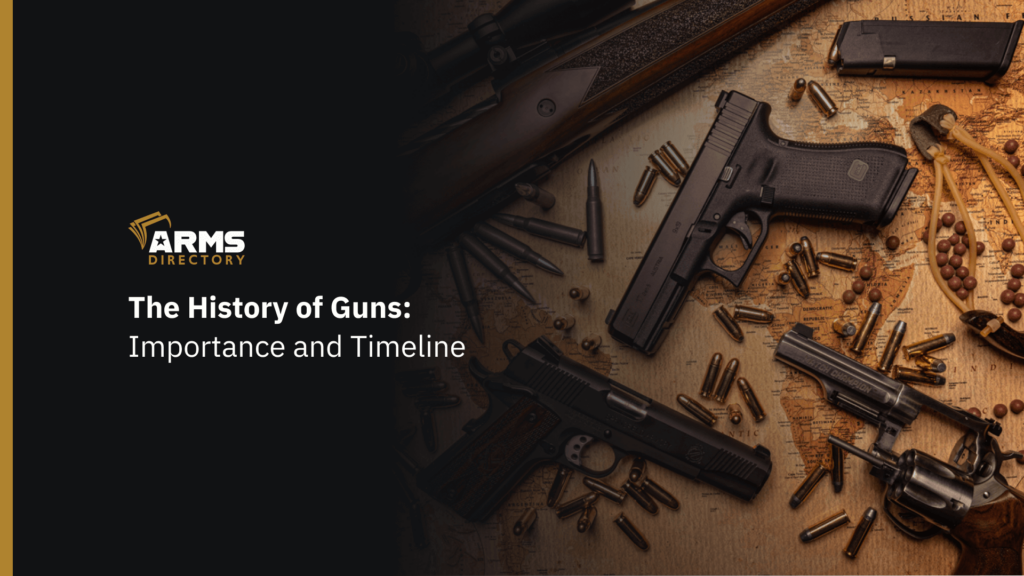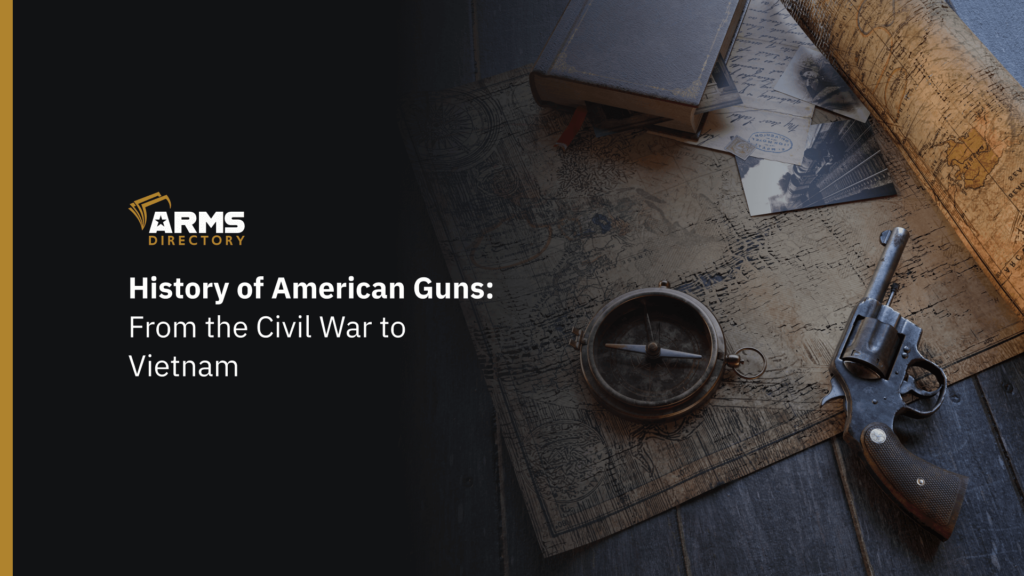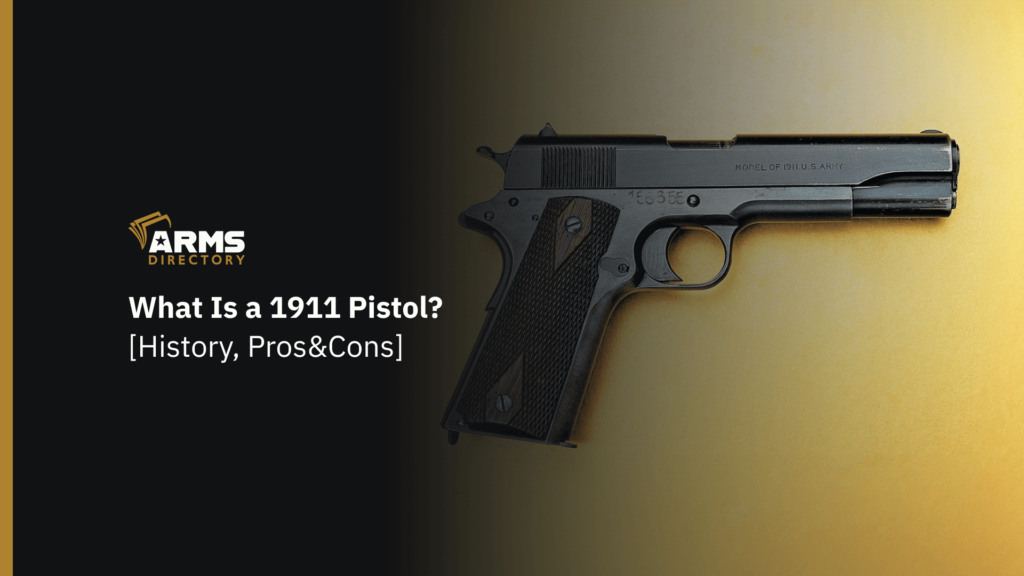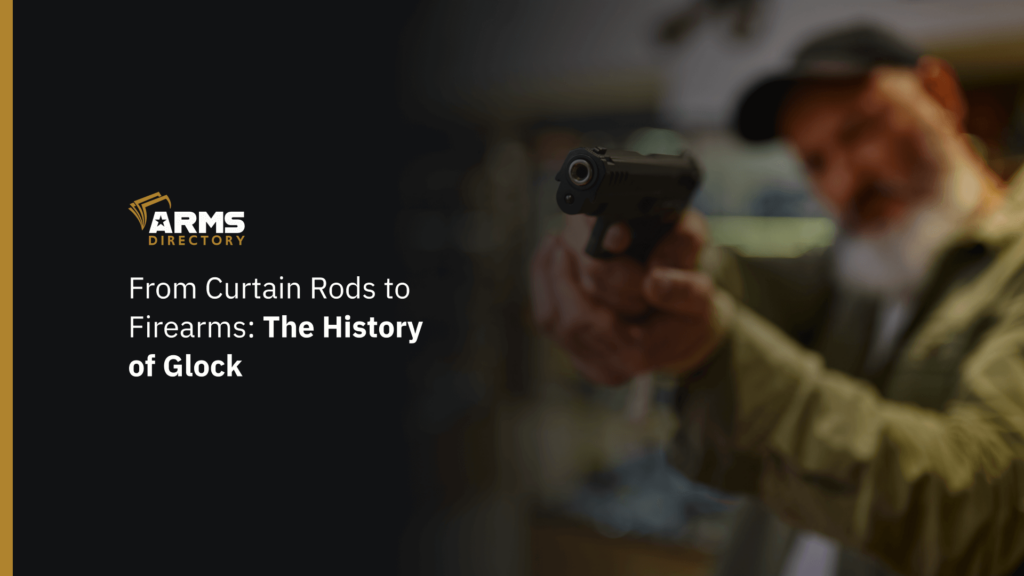
From Curtain Rods to Firearms: The History of Glock
When the news broke of Gaston Glock’s passing in December 2023, his iconic firearms company vowed that his life’s innovative work would “carry on in his spirit” – this pledge seemed fitting given the almost supernatural reputation of the Glock itself.
The Gaston Glock pistol is everywhere. It has been used by militaries, SWAT teams, licensed gun owners, and criminals, in every corner of the world. However, its inventor was nowhere to be found. He spent his life hidden away from the limelight in his lakefront Austrian home.
Gaston only made the headlines a few times: once when a business associate attempted to kill him, the publication of a book about him, his marriage to a woman 50 years younger, and during controversies such as when Saddam Hussein was discovered by US soldiers hiding with a Glock handgun in a hole in the ground.
This article explores the history of Glock and his iconic handgun. From the man’s humble beginnings to his global impact, read on to uncover the journey of this firearms industry titan.
Who Was Gaston Glock?
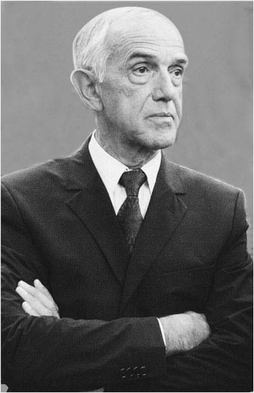
Gaston Glock was born in Vienna in 1929. His father was a railway worker. Gaston had never handled a gun until he was forcibly recruited into Hitler’s Wehrmacht near the end of WWII.
After the war, Glock completed his engineering education and worked as a plastic technician. In 1962, he married and, together with his wife, started a small business from their garage producing plastic curtain rods and metal parts for doors and windows. Eventually, knives were needed for the Austrian army, so in 1970, Glock shifted to producing field knives, field shovels, training hand grenades, and cartridge belts.
In the early 1980s, Gaston Glock was happily supplying plastic grenades to the Austrian military when one day he overheard two colonels complaining that there was no handgun to meet their needs. Glock offered to design one – they laughed. “The fact that I knew nothing about guns was to my advantage,” he said later.
Under the dim basement lights and late into the night, Gaston tinkered away undeterred on his project, using his left hand for safety just in case the blasted thing exploded.
On April 30, 1981, Glock filed the corresponding patent. As this was his 17th patent, he named the new gun the Glock 17. The Austrian army needed 25,000 of them.
Smelling success, Gaston set up headquarters in a tax-advantaged Luxembourg. One day, while he was strolling down the street, he met a businessman he knew and asked, “Do you know anyone who can help me expand internationally?”. “I’m your man,” Charles Ewert answered and proved to be as good as his word, opening doors abroad with his global connections. Ewert eventually became the public face of the Glock empire outside Austria, allowing Gaston to fully dedicate himself to the gun’s production.
In 1985 Glock set his sights across the pond, establishing a thriving Glock outpost in Smyrna, USA. As drug-fueled crime escalated, his innovative pistols flew off the shelves into the hands of countless policemen. Thanks to unbeatable production costs, the competition didn’t stand a chance against Gaston’s weapon of massive worldwide success.
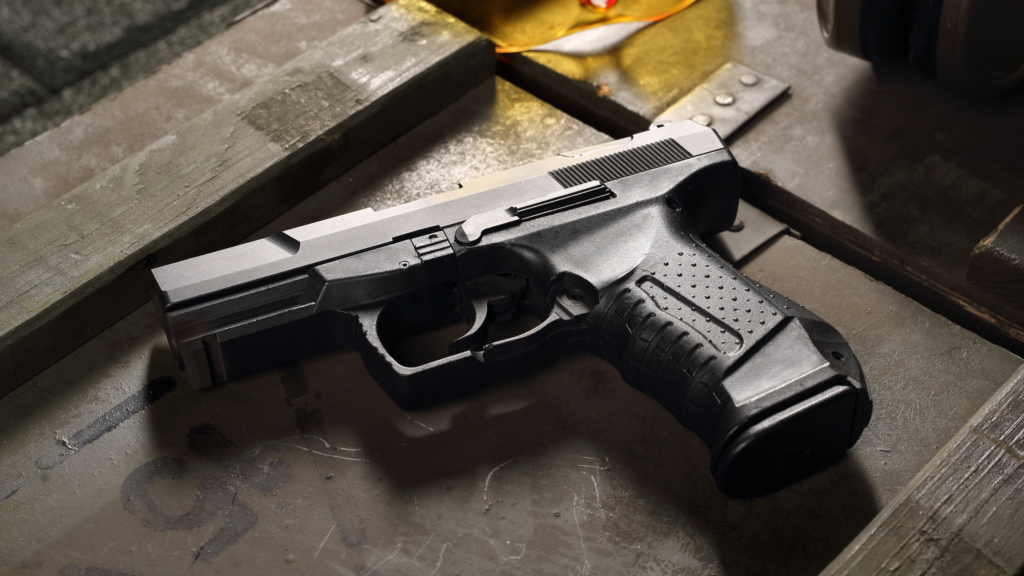
The Assassination Attempt
With his silver tongue and rolodex of global contacts, Ewert rapidly expanded Glock’s reach to offices in France, Hong Kong, Switzerland, and beyond. “They took me for his eldest son,” Ewert said when asked about his tight partnership with Gaston.
In the Spring of 1999, Glock took a call with an employee from the Geneva office, claiming Ewert had secretly embezzled company money to buy himself a Swiss mansion. Initially skeptical, Gaston confronted Ewert about the situation. He arranged a meeting where hoped his “eldest son” had a reasonable explanation for the rumor. Unfortunately for Glock, his smoking pistol of success was about to blow up in his hands in the most unexpected way possible.
On July 27, 1999, Glock was ambushed and assaulted in the garage of the Luxembourg office. Ewert hired a French mercenary named Jacques Pêcheur to kill the company’s founder. Pêcheur came out from behind the car and hit Gaston on the head with a rubber hammer. Thankfully, Gaston survived the attack and fought back, striking his assailant twice.
Jacques Pêcheur was sentenced to 17 years in prison, and Charles Ewert received a 20-year sentence following Pêcheur’s testimony. Additionally, Ewert faced charges related to weapon smuggling, valued at approximately 100 million, all stolen from the company since 1989.
After the incident, Glock returned to his villa in Vöcklabruck, Austria. His favorite room was the basement, where he could control every small detail of his inner workings (e.g., the temperature of the tiles in the bathroom on the upper floor).
Gaston continued to work and live in seclusion for the remainder of his life, occasionally meeting with lawyers while dealing with his messy divorce from his first wife, Helga Glock, who accused him of racketeering.
In 2021, Forbes estimated Gaston Glock’s net worth at $1.1 billion. He died at the age of 94 on December 27, 2023.
Glock the Genius: The Glock 17
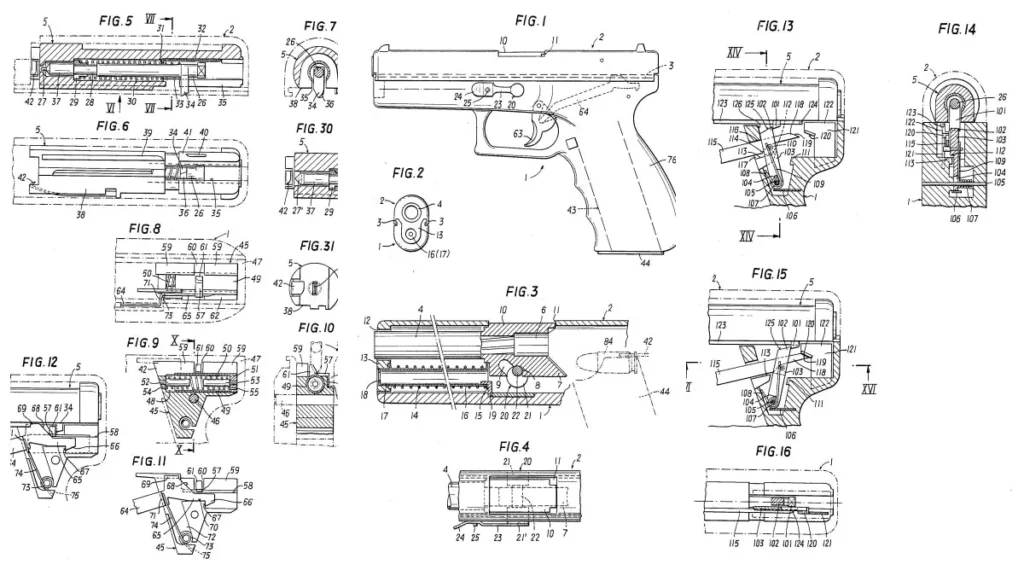
The firearm shattered all expectations with its unconventional polymer frame and fierce reliability. But that is not all; the handgun checks almost all the boxes in terms of design and features.
The Glock Design:
- Innovative Materials: A pioneer in the use of polymer for its frame, the Glock 17 revolutionized the industry by significantly reducing its weight and enhancing durability. This unconventional material distinguished it from traditional all-metal handguns.
- Simplicity: Gaston Glock prioritized simplicity, resulting in the 17 having minimal components, facilitating easy disassembly, cleaning, and maintenance.
- Metal Components : Despite its polymer frame, essential parts such as the slide, barrel, and trigger remain metal, ensuring resilience and dependability.
- Ergonomics: The Glock 17’s grip angle and contours provide a comfortable fit for most hands, although opinions on the grip texture may differ among shooters.
Features
- Reliability: The 17 is renowned for its legendary reliability, having passed Austrian military tests in 1982, it also outperformed eight other respected gun manufacturers during army trials.
- Capacity : Equipped with a standard 17-round magazine, the Glock 17 offers ample firepower. It even has customizable and extended magazine versions with up to 33 rounds.
- Accuracy: While it may not be the most precise pistol in the box, the Glock 17 provides sufficient accuracy for most shooters, aided by its generous 6.5-inch sight radius.
- Controllability: With its ample grip and manageable recoil, the handgun is easy to control, even when wearing gloves.
- Affordability: Whether you choose the latest Glock 17 Gen 5 or a used G17, these firearms are budget-friendly and suitable for the average working person’s pocketbook.
- Easy Maintenance: Requiring no tools, it can be quickly cleaned by simply disassembling the barrel, slide, and recoil spring assembly. It remains reliably functional even when slightly dirty.
- Ammo Compatibility: Glocks are compatible with various types of ammo, from inexpensive steel-case rounds to high-end self-defense loads, showcasing their ability to reliably function with different types of ammunition.
The pistol has undergone several generations of improvements, including features like an enlarged magazine catch and ambidextrous slide stop lever.
More Reasons for Success:
- Law Enforcement and Military Trust: Glock 17s are standard issue for many law enforcement agencies and military units worldwide. Their reliability and ease of use contribute to this trust.
- Civilian Popularity: Beyond professional use, civilians love the gun for home defense, concealed carry, and recreational shooting.
- Versatility: Whether you’re a novice shooter or an experienced gun enthusiast, the 17 adapts to various roles.
- Legacy: The innovative handgun’s impact on firearm design and its role in popularizing polymer-framed handguns have secured its place in history.
Glock 17 in Popular Culture
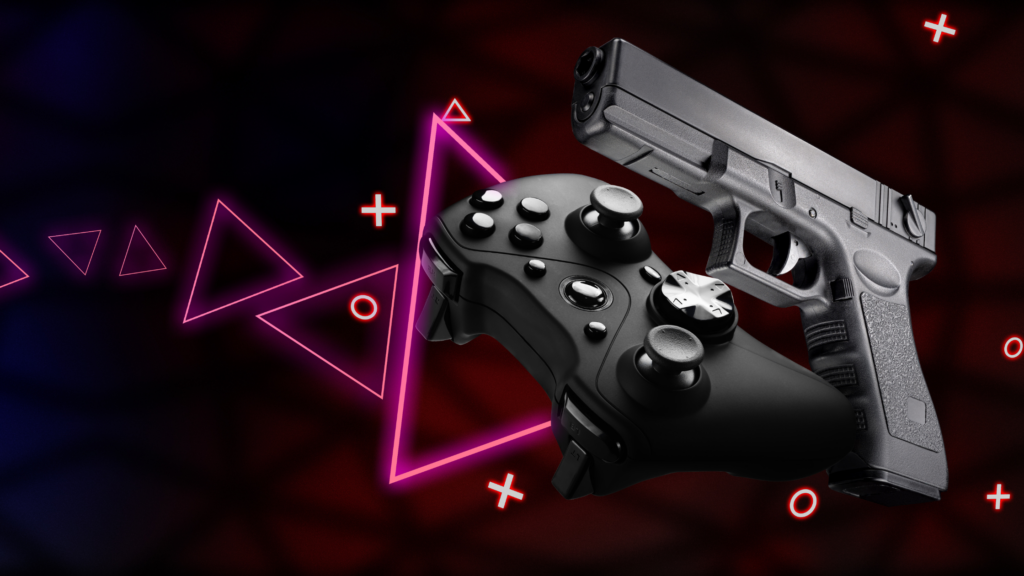
With 15 million Glock 17 pistols sold worldwide, it’s no surprise this handgun stands out, especially in the media and on the big screen. Movie directors frequently cast the Glock 17 as the weapon of choice for police, military, assassins, and criminals. Blockbuster films such as The Matrix: Reloaded, Die Hard 2, Terminator 2, and The Dark Knight all featured a G17 appearance.
This gun has also made cameos across television shows, video games, anime series, and rap lyrics. Anti-heroes like the digital vengeance-seeker the Punisher or Maggie Q’s spy character Nikita, wield Glock 17s to “get the job done.” Top video games like Call of Duty and Counter Strike also have digital versions of the Glock 17 for online players to equip. And rappers like Dr. Dre has name-dropped the “Glock 40” in lyrics glamorizing it.
Wrap Up
The history of the Glock proves that innovation can come from unexpected places and revolutionize an entire industry.
Who knew a curtain rod maker could craft one of the most game-changing firearms ever? Yet that’s exactly what Gaston Glock did. His radical polymer Glock 17 took the shooting world by storm. Four decades later, this Austrian trailblazer keeps wowing fans worldwide with its sleek style, reliability, and accessibility for experts and newbies alike.

![The Ultimate Shooting Accessories for Every Weapon [A 2023 Beginners Guide]](https://vault.armsdirectory.com/wp-content/uploads/2023/08/30071223/The-Ultimate-Shooting-Accessories-for-Every-Weapon-A-2023-Beginners-Guide-1024x576.png)
